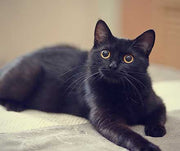Introduction to Cat Shows

You've heard of dog shows, but have you ever heard of cat shows? The first modern cat show was held in London in 1871. In the US, the Cat Fanciers' Association (CFA) was established in 1906 and has been organizing cat shows ever since. Every year, the largest cat show – the CFA-Iams Cat Championship – is held in Madison Square Garden, with 325 cats participating in the competition. To learn more about the basics of cat shows, keep reading!
Quirky Atmosphere
One thing you're sure to notice at a cat show is the quirky atmosphere. Cat owners decorate their cat's cages, and you'll hear a lof of shouting between cat owners. Also, don't be surprised if witness an occasional cat escape! So, even if you never plan on entering your cat in a compeition, they are still fun to attend and witness!
The Judging
Like dogs, cats are judged according to the standard features of their respective breeds. This means that judges keep in mind just exactly how the cat should look and behave according to that cat's breed.
Features include: the fur coat pattern and texture, head proportions, profile, teeth, eye size and color, neck, paws, and tail. The judges score each cat in a category based on how well it meets the standards for its breed. Each feature has a different point value. Unlike dog shows, some cat shows include a house breed category, meaning that your average cat can compete in a cat show.
Classes of Competition
Specialty shows included cats from a particular breen or color division. Otherwide, cats compete against each other in all-breed shows. Cats are assigned benched cages, which they wait in until the judge is ready for them.
The classes of competition are as follows:
- Championship – Open to cats that are not spayed or neutered and are at least eight months old.
- Premiership – Cats that are spayed or neutered but would otherwise qualify for the championship class.
- Provisional – This class is for breeds that the CFA has not yet fully recognized for the championship category.
- Kitten – Cats in this class are between four and eight months old.
- Miscellaneous – Cats in this class are of breeds not yet recognized as a provisional. While they may show, they cannot compete for awards.
- Veteran – Cats in this class are at least seven years old, though their owner may choose to enter them in other categories.
- Household Pet – Any cat that is at least eight months of age, has not been declawed, but has been spayed or neutered can enter this class.
Awards
Starting with the open classes, judges award first place (blue), second place (red), and third place (yellow) to males and then to females in a class. The winner also typically receives a red, white, and blue winners ribbon; after six winner's ribbon in the open classification, it receives the title of champion, which then allows the cat to compete against other champions. Merit awards are given out for household pets, which aren't eligible for championships. Ribbons are also given for best of color, second best of color, best of breed, and second best of breed, and the best champion.
Conclusion
You may be stunned to learn about cat shows. They can get very competitive between cat owners, but are very fun to attend. So, if you ever have the chance to attend a cat show, we highly recommend it!
Addition Resources:
Previous article

Next article

Related posts
View all-

What Can You Use Instead of Cat Litter?
Traditional cat litter is convenient, but it’s not the only option. Many cat owners look for alternatives to reduce waste, save money, or avoid chemicals found in clay-based kitty litter. Some options offer better odor control, while others are more eco-friendly or gentler on a cat’s paws.
Read Article -

How to Keep My Backyard Smelling Fresh
A clean backyard should smell fresh, unlike pet waste, smoke, or mold. Bad smells can linger, especially when dog poop, urine, or food scraps attract flies and bacteria. If your yard has a foul odor, it's time to take action. The first step is cleaning up pet feces, trash, or rotting food. A garden hose can wash away dirt and urine from artificial turf, patios, and decks. To neutralize odor, Use baking soda, white vinegar, and essential oils.
Read Article -

What Supplies Do First-Time Cat Owners Need?
Bringing home a new cat is exciting, but making them feel safe and comfortable takes more than love. First-time cat owners must prepare with the right supplies to ensure a smooth transition. From a litter box to cat food and a warm bed, having the basics ready can help your new kitty settle in faster. This guide covers everything a new cat owner needs to make their new pet feel at home.
Read Article



